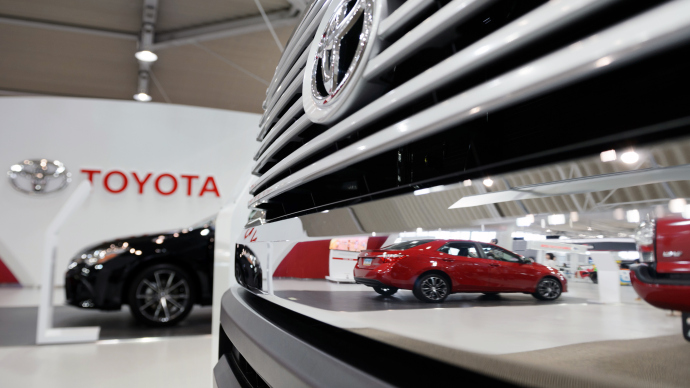In a first-of-its-kind partnership between a major Japanese automotive giant and a telecom giant, Toyota Motor and Nippon Telegraph & Telephone (NTT) have agreed to collaborate on 5G technology to be used in future autonomous vehicle technology. The official announcement is expected to be made later this month, according to Nikkei Asian Review.
5G, as some of you might know, is the next generation of wireless mobile. But the leap from the current 4G to the new 5G protocol is not an incremental one. 5G is expected to boost mobile connectivity speeds by a factor of up to 10X. 4G typically works in the range of 100Mbps to 1Gbps, while 5G’s range is 1Gbps to 10Gbps.
Projected 5G Specifications:
1-10Gbps connections to end points in the field (i.e. not theoretical maximum)
1 millisecond end-to-end round trip delay (latency)
1000x bandwidth per unit area
10-100x number of connected devices
(Perception of) 99.999% availability
(Perception of) 100% coverage
90% reduction in network energy usage
Up to ten year battery life for low power, machine-type devices
What’s relevant to our discussion here is the capacity of 5G technology to handle an increasing demand from IoT solutions such as connected cars. In the domain of autonomous vehicle technology, this is a critical component of data transfer between the end points and the hub.
The work to be jointly carried out by Toyota and NTT will be specifically around developing connected car technology using 5G signals. Plans are also underway to integrate AI applications and big data analytics.
One of the biggest hurdles to self-driving technology, so far, has been the limitations of 4G. Because 5G can handle up to 100 times the number of connected devices – yet provide low latency, high availability and other benefits – it opens up the possibility of transferring large amounts of data using roadside telecom equipment already owned and operated by NTT.
Essentially, this will allow connected cars to get data about their surroundings from their surroundings, rather than having to communicate with a central hub. This type of cloud-based computing is referred to as Edge Computing, and venture capitalist Peter Levine is betting big on this next-generation cloud computing deployment model.
Toyota has employed NTT Docomo and other companies to build out this ‘en route communications’ network to make self-driving vehicle technology more viable and more robust.
Another major benefit to using 5G for autonomous vehicle technology is the ancillary services that are expected to grow around self-driving cars. For example, connected cars will be able to stream HD videos right to their onboard screens, which means HD video conferencing on the move (when both participants are travelling in different self-driving cars) will now be possible without worries about latency and other problems.
Toyota already has a partnership with local mobile carrier KDDI to develop autonomous vehicle communication technology on 4G, and this partnership is expected to extend into 5G research and development for such systems as well.
Several partnerships have been formed between software companies, telecom companies and automakers in the race for autonomous vehicle technology. GM has tied up with AT&T on 4G, Audi, BMW and Daimler have signed up with Intel and Ericsson, Honda Motor and SoftBank are working on AI applications for automobiles, and the Nissan-Renault Alliance is working with Microsoft.
The race to fully autonomous vehicle technology has started, and it will give rise to several related industry segments in the process. The question now is to see which company can provide the best infrastructure for a fully autonomous system, who can get the safest self-driving cars on the road and who can develop the best AI, big data and cloud solutions for this relatively new industry.
Thanks for reading our work! We invite you to check out our Essentials of Cloud Computing page, which covers the basics of cloud computing, its components, various deployment models, historical, current and forecast data for the cloud computing industry, and even a glossary of cloud computing terms.



